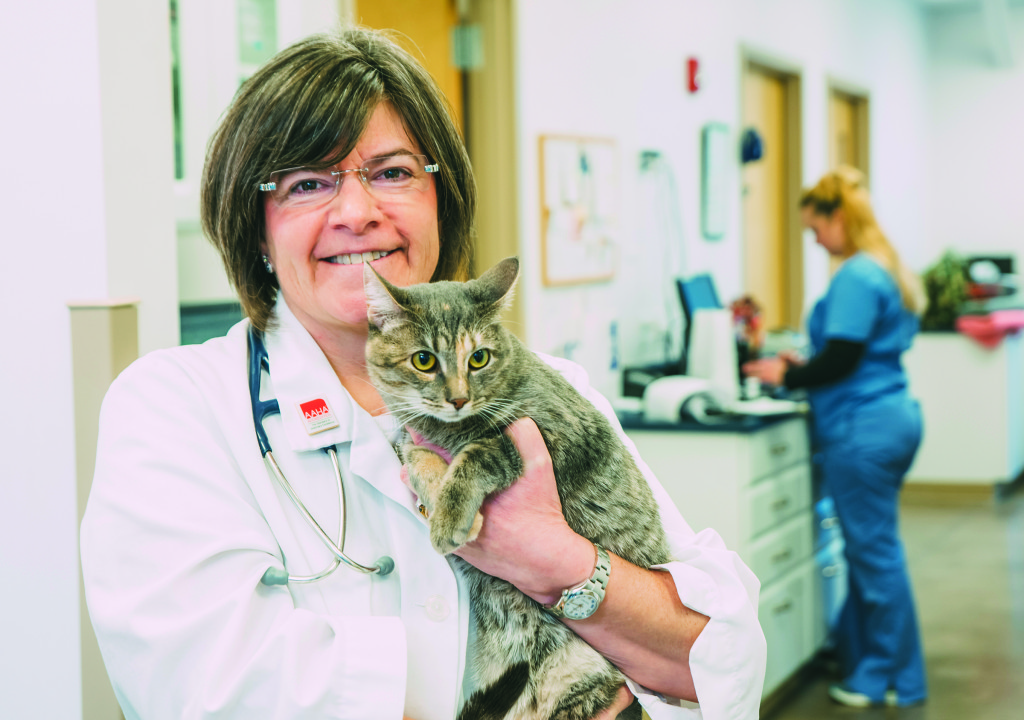As pet owners, we face many dilemmas during the lifespan of our furry friends.
The bulk of those are health related (although there are an assortment of behavioral ones, too). The past decade or so we can add another: Pet health insurance, do we or don’t we . . . purchase?
It’s like rolling dice on your dog’s or cat’s lifespan, yet it is encumbered with many profound questions.
Will he/she remain healthy throughout his/her life?
Is the breed associated with an array of genetic ailments or illnesses?
To determine which best meets my pets’ needs, have I familiarized myself with all of the available plans? (Yes, it can be highly confusing, like shopping for auto or home-owners insurance offerings.)
Is my veterinarian and/ or his/her staff well-versed on the subject and able to confidently offer me needed advice?
All plans have some exclusions, hence you must become enlightened with those you are studying, hence avoiding any surprises.
Pre-existing conditions are not covered by any plan. And most coverage is predicated on reasonable veterinary fees for the geographical area. Those are determined from industry and proprietary figures.

Dr. Nancy Soares
We posed questions relative to pet-health insurance to Dr. Nancy Soares, 2016-17 president of the American Animal Hospital Association and owner and medical director of her own hospital in Macungie, Penn.
Here are her responses:
From a veterinarian’s perspective, what are the chief reasons a client should purchase a pet insurance policy for his/her pet?
Think about this: Would you want to be forced into declining treatment for your pet because you didn’t have a way to pay for it? If you’re like many other pet owners out there, the answer is a resounding no. That’s where pet insurance comes in. It offers peace of mind that if or when your pet gets sick, you have options available to you; you won’t have to choose between paying for your own health care and paying for your pet’s health care. It also reduces the stress involved with an emergency veterinary visit. With pet insurance, you’ll know your pet is covered – and that’s one less thing for you to worry about in an emergency situation.
Because of the number of pet insurance plans out there, what advice do you offer clients when studying the differences?
Look at your pet’s lifestyle needs and think about its future needs. Is your pet’s breed prone to particular illnesses later in life? Is your pet an athlete who could be prone to injury? We all know that accidents can happen to any pet any time, but you can plan ahead and think about the type of care that your pet may need one year, five years, or even 10 years down the line, and make a decision about what type of plan based off of that.
What percentage of your hospital clients seek out information on pet-insurance plans from you or your staff?
0.5 per cent
What prompts them to ask about plans? An existing illness of a pet (even though that would not be covered)? Simply being proactive on their pet’s behalf? Hearing about it on the internet or a TV commercial?
The number of pet owners who inquire about pet insurance is small. This majority falls into two categories: first-time pet owners and those faced with a serious problem/illness for the first time.
Whether they ask or not, we provide first-time owners with information on insurance in a new patient care packet. Based on breed and use, we discuss the availability of insurance for their pets. By the time the diagnosis is made or the trauma occurs, it’s too late to get coverage. We don’t have to be insurance experts but we can be information experts. We can direct pet parents to the materials and information that will enhance the bond they have with their pets.
Assuming your hospital has brochures of one or more pet-insurance plans in the waiting area, what prompted you to select those particular plans? A sales pitch from a company salesman? Familiarity with the firm? Or another reason?
A designated team member, our client coordinator, is responsible for handling pet-insurance inquiries and paperwork. She researched a number of plans and narrowed it down to a short list based on company history, comprehension of plan, user friendly for both client and hospital and educational materials provided to clients and hospitals.

Dr. Mary Beth Leininger
Dr. Mary Beth Leininger, assistant vice president, Veterinary Relations for the Hartville Pet Health Insurance Group, providers of ASPCA Pet Health Insurance and chair of the Veterinary Relations Committee for the North American Pet Health Insurance Association, is obviously a strong advocate of the protection, too.
She notes there are 14 companies offering pet-insurance plans in the U.S. and Canada, with all belonging to the umbrella group, NAPHIA (whose membership makes up 99 per cent of all pet health insurance coverage in North America).
While most veterinarians disdain having to be salespersons for a pet-insurance product, they acknowledge the need to be informed about those with which they carry information in their waiting rooms.
Trust worthiness and previous experience of clients who have policies through a company are keys for practitioners in embracing a firm, says Leininger. “Veterinarians are uncomfortable talking fees and cost of care and prefer to identify one staff member to discuss such matters with clients. That individual is usually the one who insurance discussions fall upon, too.”
A pair of NAPHIA research studies – one in October 2015 with a sampling of 626 U.S. and Canadian adults who had primary or shared responsibility for pet care, and a second last January among 505 U.S. and Canadian veterinarians — produced the following:
- Fifty six per cent of the veterinarians wished all of their clients had pet health insurance. Most believed that insurance was highly effective at increasing compliance with veterinarians’ recommendations, increasing purchases of veterinary medical services and increased pet health expenditures.
- The survey among pet owners demonstrated that 50 per cent would likely purchase pet health insurance if their veterinarians actively recommended it.
- Most owners who buy insurance aren’t doing it for economic reasons, rather for peace of mind and a sense of security that they are doing the best for their pet.
- Contrary to an opinion sometimes voiced in veterinary circles, the vast majority of the respondents did not believe the increased use of pet health insurance would lead to managed care, i.e. the insurance companies would boast too much influence on the profession.
- For pet owners, veterinary practices (45 per cent) are the leading source of information on pet health insurance, followed by the internet (37 per cent) and family and friends (28 per cent).
- Owners with pet health insurance spend 29 percent more on dogs and 81 per cent more on cats.
- Of veterinarians surveyed, 56 per cent of U.S. practitioners wish all clients had pet health insurance, compared to 85 per cent in Canada.
While pet health insurance has been on the radar of veterinarians and clients alike more in recent years, it is not new to the U.S. The famed TV dog Lassie received the first policy, issued by Veterinary Pet Insurance in 1982.
Despite the wide assortment of policy options available, North American pet owners have been slow to embrace the protection. Results from a 2013-14 National Pet Owners Survey estimate there are 179 million pets in North America; only 1.4 million of those, however, are insured by NAPHIA members.
So the bottom line becomes: Is pet health insurance worth it? The answer is both economic and emotional. Most are conflicted. We love our pets and want to maintain their health and welfare … but at what price?
The ultimate decision becomes highly personal with no right answer. But you owe it to both yourself and your pet(s) to thoroughly study all your options before making that critical decision.

